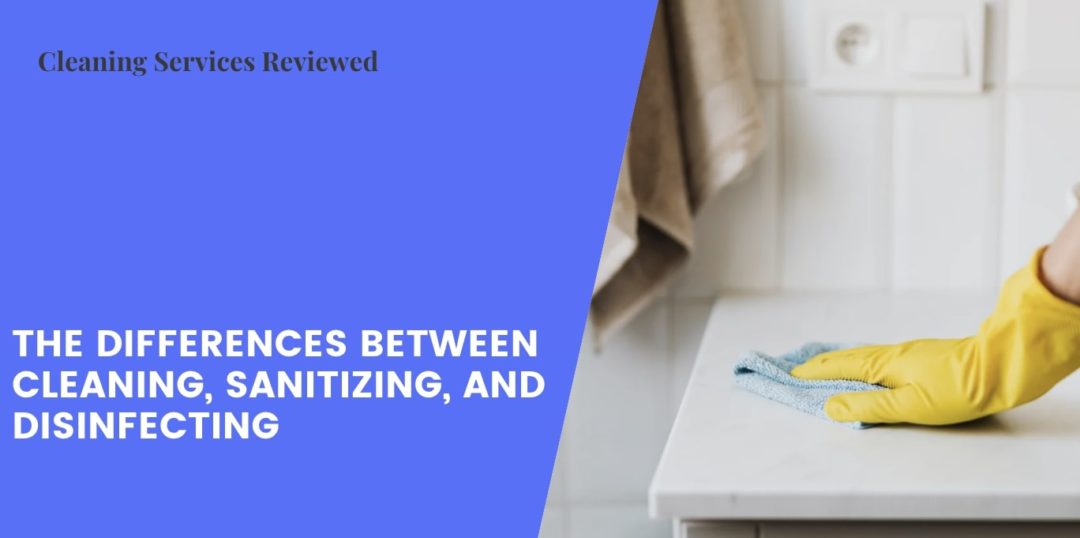In keeping our homes and areas clean, we may come across the terms disinfecting, sanitizing, and cleaning if we enlist a professional’s help.
You must know the difference between the three so you can be certain if your home or workplace is as clean as you expect it to be.
In this guide, we will differentiate the three terms from each other. This will enhance how you keep your space hygienic, comfortable, and relaxing.
Without further ado, let’s begin!
Defining Cleaning, Sanitizing, and Disinfecting

Let’s get clear on the definition of cleaning, sanitizing, and disinfecting. This allows you to get the type of cleaning service you require.
- Cleaning – This is the activity in which dirt, dust, hair, and crumbs are removed off an object or surface.
It can involve the use of water and soap as well as cleaning tools such as a broom and a dustpan, a vacuum cleaner, and a microfiber rag for washing a surface or clothes.
However, cleaning does not take out 100% of the bacteria and viruses. It removes some of it, though, so there’s less chance of them spreading or causing an infection.
- Sanitizing – Sanitizing only reduces but does not kill harmful bacteria, viruses, and fungi.
These are found on many surfaces, especially faucet handles, switches, doorknobs, tables, and other dirty or frequently touched surfaces.
There are different ways of sanitizing a place or a thing. For instance, you can use an antibacterial wipe on the kitchen countertop or apply a special formula on carpets that kills unpleasant odors and bacteria lingering in their fibers.
Also, it’s important to add that sanitizing procedures vary depending on the type of your business or industry. Say, a restaurant or cafe has higher cleaning standards than a simple shop.
- Disinfecting – Disinfecting is done to kill the present germs and bacteria invisible to the naked eye. Common disinfectants include rubbing alcohol, bleach, or vinegar solutions.
Be careful, though, not to mix vinegar with bleach, bleach with ammonia, or hydrogen peroxide with vinegar since they can result in toxic fumes that can cause severe health complications or may even be fatal.
After applying the disinfectant to a thing or a surface, you have to leave it for a certain amount of time to eliminate the bacteria.
Having said that, you have to be aware that disinfection doesn’t necessarily clean them. So it has to be combined with prior cleaning for best results.
Conclusion
To recap, cleaning removes dust and dirt, while sanitizing reduces bacteria, and disinfecting completely kills contagious bacteria or viruses.
To achieve the most spotless cleaning result, it’s essential to combine cleaning with either sanitizing or disinfecting.
Besides that, you have to use the right product and method based on the surface or object to be cleaned and the application directions of the product. For instance, using a gentle and effective cleaner often requires letting the formula dwell on the surface or object for a certain time.



